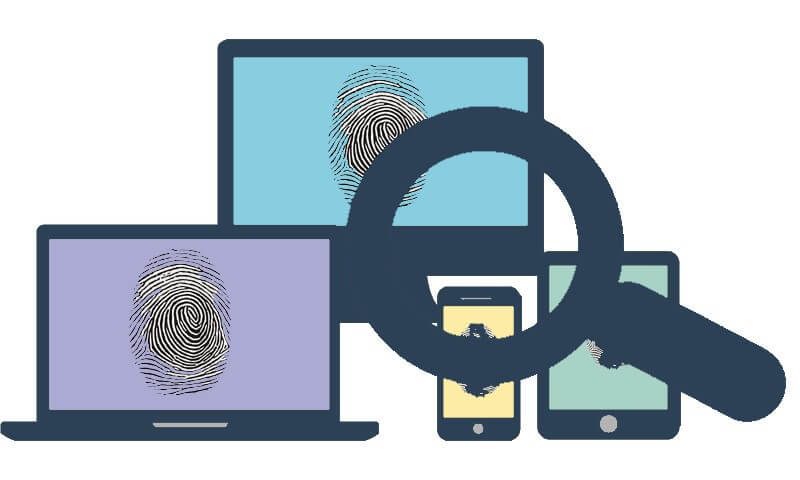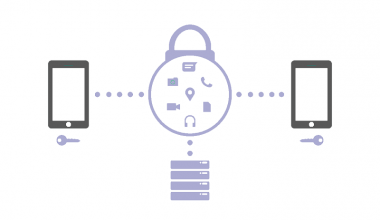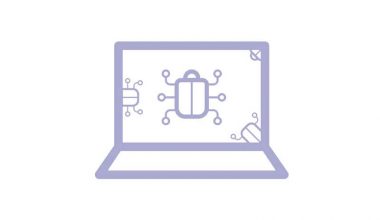The cookies seem to be the renowned way to identify and track people online. But this isn’t the only one. Device fingerprinting has gone somewhat below the radar as a much more covert option to cookies. But now browser makers like Google, Apple, and Mozilla have criticized fingerprinting as an intrusive privacy activity, which they are aiming at eradicating as part of a broader digital crackdown.
What is Device Fingerprinting?
Device Fingerprinting is also called Browser Fingerprinting.
When people access the service, they need two tools: an online connection that recovers an IP and a device with a mobile app or internet browser. Two sources of data are developed. They are available at the login, sign-up, check-out, or when surfing the web. We may gain valuable information from both of these pieces of data with the right strategies.
- Combining the data about a device and a browser is termed as fingerprinting. It shows how the user connects to your service. It allows us to understand the actions of the user and above all, flag potential scammers.
- Device Fingerprinting is a data collection of a remote computer system for identification purposes. Fingerprints may be used to completely or partially identify the different users or computers also when cookies are disabled.
- This implies that when you access the internet on your computer or smartphone, your Device transfers a lot of specific information to the server. Device Fingerprinting is a useful tool that sites are using to gather data about your OS, browser type and its version, active plugins, language, time zone, screen resolution, and some other settings of the user.
- Such data points may at first look normal and may not actually seem to be personalized to classify a particular person. However, there is a very slight possibility for the other user to have 100% perfectly matched browser data.
What Information is Gathered to Make Device Fingerprint?
Every time when a web request is received at the server, apart from the cookies, Device fingerprinting provides a vast amount of information. It creates the fingerprints depending upon the combination of many data points.
- HTTP request headers
- IP address
- User-agent string
- Client time zone
- Installed plugins
- Timestamps
- Silverlight Data
- List of the installed fonts
How Does Device Fingerprinting Work?
Device Fingerprinting is not so much mysterious or complicated. Just like at the crime scenes investigator collects the fingerprints, the same related to users. Without becoming too analytical about the entire process, whenever you visit some websites, they leave some hints about your Device. These hints are gathered and created a profile of the user.
This is useful in many ways, like when various devices are linked to that same IP and when you need to decide which type of web page to open for a particular device.
Companies can monitor users visiting their site and then use the information to improve advertising, marketing, website development, and protection.
Some online services are already using Device fingerprinting, and you don’t even know about that. Google Analytics is one of them. You can use Google analytics on your mobile, pc, or tablet to collect the data of different users visiting your site. But you cannot know about the devices of these users, and you can only have a general list of users. You can’t determine what kinds of visitors are visiting your website.
What Purposes is Device Fingerprinting used for?
- Tools of Device Fingerprinting include an option for marketers in several sites to monitor the behavior of a visitor. These often allow banks to assess whether a request is made by a confidential tool or by a program connected to fraudulent activities previously.
- It helps the websites to stop creating several accounts. Search engines can also monitor the suspicious behavior of the devices through Device Fingerprinting.
- They can also detect and stop credit card fraud or identity theft. But these methods compromise the privacy of users, and the data analysis is not possible to detect.
How to Stop Device Fingerprinting?
Fingerprinting is different from the other online spying. You cannot avoid it by clearing the caches or cookies. Some changes in the browser cannot stop it. There are some different methods to deal with this problem.
1. Use privacy-first browser
All the browsers or devices cannot detect the range of uncertainty in Fingerprinting. The creator of Fingerprinting software stated that by using different software, it is possible to protect yourself from fingerprinting. You can use the Tor browser for that purpose. It takes care of the privacy of users and tries hard to make the Device of all the users look the same.
2. Consumer-friendly software
Macs, Apple iPhone, and iPad use the Safari browser and that browser is difficult to fingerprint. As the products of Apple are appropriately standardized, so they look like the software of Fingerprinting. Apple’s Safari is already minimizing the fingerprint by sharing a minimal amount of information.
While providing the information of your Device, Safari seeks your permission and shares your data only after you allow it. You don’t need to change the settings of your Device because they are already enabled by default for your protection.
3. Use Browser Privacy Extensions
Google’s Chrome browser is not doing much to avoid fingerprinting. There are several extensions of browsers like Privacy Badger, Jackson’s Disconnect, uBlock Origin, or Electronic Frontier Foundation’s to stop the fingerprinting.
4. Disable Flash and JavaScript
Disabling the software of Device fingerprinting that runs on Flash or Java would be the best protection against the tracking. But disabling such software can disturb your online browsing experience because several sites cannot operate without JavaScript. All the features which improve your online experience will be lost.
5. Connect with a VPN
Start using a VPN service for a better online experience, and it will also protect you from online tracking. The Device fingerprinting can be avoided by using a virtual private network because it completely hides your IP address, and the real IP address will not be added in your “Fingerprint.”
You may also like:
What are the Best Chromium Based Browsers?
What is Ad Blocker? How do they Protect your Online Privacy?
Browser Hijacking: Signs and how to prevent it
8 Best Web Browsers for Privacy and Web Security
What is the difference between Tor and VPN?
Should I Use Tor and a VPN Together?
The Difference between a VPN and Incognito Mode / Private Browsing
How to Open a Computer without Password?
What a VPN Does to Protect Your Computer
Top 6 VPN Scams You Should be Wary of
Connect with the most trusted and secure VPN service, which provides you better protection. If you don’t know much about the VPN services and searching for the best VPN service, download RitaVPN and connect with it. It provides you high-class protection by encrypting your data.
If privacy is your concern and you cannot compromise on your online security, RitaVPN is the best option to choose because military-grade protection secures your Device, and the fast servers provide you high-speed internet. It unblocks websites, and you can access any website you want in just a few minutes.






